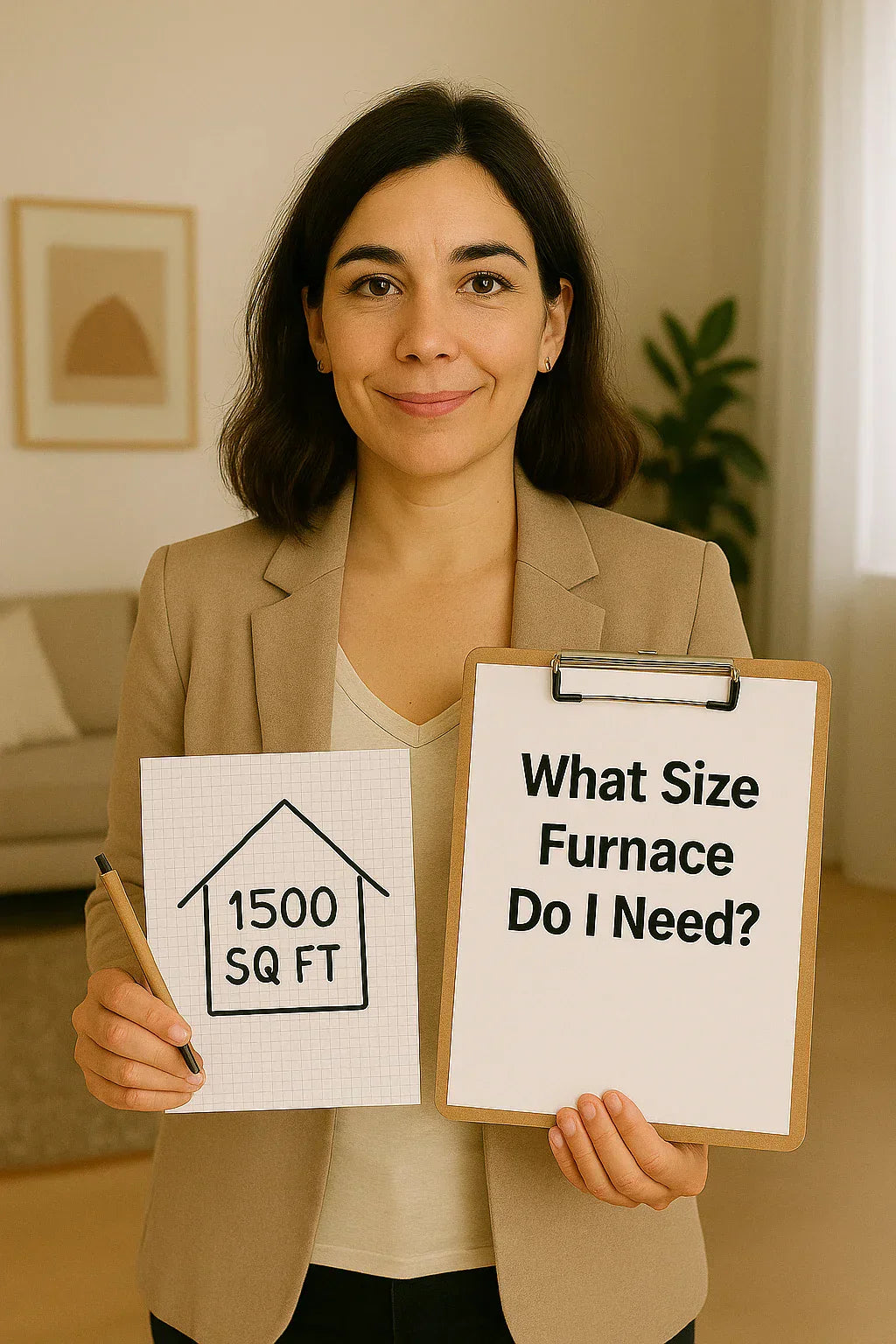🏠 Introduction: Sizing Isn’t Guesswork
When it comes to furnaces, size matters — and bigger isn’t always better. Selecting the right furnace size for your home is critical for:
-
Comfort
-
Energy efficiency
-
Long-term performance
-
Cost savings
This comprehensive Savvy Mavi guide will help you understand how furnace sizing works, what factors influence it, and how to avoid the costly mistakes of oversizing or undersizing.
📏 Furnace Sizing Basics
Furnaces are rated by BTUs (British Thermal Units) — a measure of how much heat the unit can produce.
-
Typical residential furnaces range from 40,000 BTUs to 140,000 BTUs.
-
The goal is to match the furnace output to your home's heat loss so it maintains indoor temperatures without excessive cycling or waste.
Oversized units:
-
Short cycle frequently
-
Wear out components faster
-
Struggle with humidity control
Undersized units:
-
Run constantly
-
Fail to keep you comfortable during extreme cold
-
Stress components leading to premature failure
🔬 How Sizing Is Calculated: Manual J Load Calculation
Professional HVAC contractors use Manual J calculations, which consider:
-
Square footage
-
Insulation levels (walls, attic, crawlspace)
-
Window type, size, and placement
-
Number of occupants
-
Ceiling height
-
Local climate zone
-
Air infiltration rates
-
Orientation to sun (solar gain)
You can read a detailed explanation at the Air Conditioning Contractors of America (ACCA).
🌎 Climate Zone Matters
Climate plays a huge role in furnace sizing:
| Climate Zone | Heating BTUs Per Sq Ft |
|---|---|
| Very Cold (Northern U.S.) | 50-60 |
| Cold | 45-50 |
| Moderate | 35-45 |
| Warm (Southern U.S.) | 30-35 |
Example:
-
A 2,000 sq ft home in Minnesota (Very Cold Zone):
-
2,000 x 55 BTUs = 110,000 BTU furnace.
-
-
The same home in Florida (Warm Zone):
-
2,000 x 32 BTUs = 64,000 BTU furnace.
-
Use the Department of Energy Climate Zone Map to find your zone.
🧮 Simplified Sizing Formula (Rough Estimate)
Home Square Footage x BTUs per Square Foot = Furnace Size Needed
While this formula gives a ballpark estimate, it should never replace a professional load calculation, especially for:
-
New builds
-
Energy-efficient homes
-
Remodels or additions
🛑 Why Oversizing Is a Problem
Homeowners often assume bigger equals better. But oversizing creates issues:
-
Short cycling (frequent on/off)
-
Poor humidity control
-
Noise
-
Uncomfortable temperature swings
-
Wasted energy
-
Reduced lifespan of components
Read more about short cycling problems at HVAC School.
🛠️ The Role of Two-Stage and Modulating Furnaces
Modern high-efficiency furnaces offer staging features:
-
Single-stage: Full power or nothing. Simple but prone to short cycling.
-
Two-stage: Low and high stages. Runs on low most of the time for comfort.
-
Modulating: Adjusts output in tiny increments to match exact needs. Best comfort and efficiency.
These advanced models can somewhat forgive minor sizing discrepancies, but correct sizing remains crucial.
Learn more about staging at Energy Star Heating Systems Guide.
🔧 Special Considerations
Insulation Upgrades
-
Better insulation reduces heating demand.
-
May allow for a smaller furnace.
Ductwork
-
Poorly designed or leaky ducts affect heating delivery.
-
Sizing must account for duct system efficiency.
Windows & Doors
-
High-performance windows can reduce heat loss.
-
Drafty doors/windows increase required furnace size.
For home energy audit guidance, check Energy.gov's Home Energy Saver.
🏅 The Savvy Mavi Takeaway
-
Furnace sizing is too important to guess.
-
Use climate zone, home specifics, and professional load calculations.
-
Avoid the trap of oversizing.
-
Consider advanced staging furnaces for superior comfort.
-
Factor in future energy upgrades.
With the right furnace size, you'll enjoy better comfort, lower bills, and longer equipment life.
In the next topic we will know more about: Single-Stage vs Two-Stage vs Modulating Furnaces: Which Is Best?







